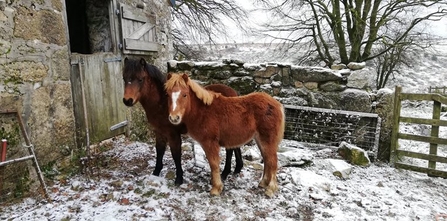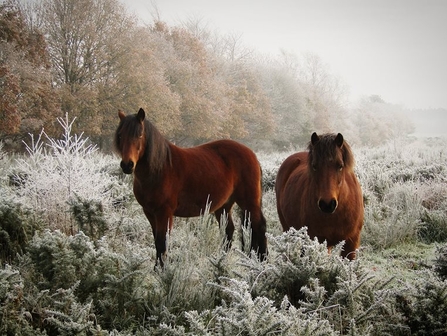Whilst many are expecting to hear the sound of reindeer hooves in the coming days, here at NWT we are listening out for the arrival of a herd of 15 Dartmoor ponies.
The herd includes youngsters, Sherberton Samson & Sherberton Steele, and arrives from five different Dartmoor pony moorland breeders in Devon. The ponies range in age from one to six years old, both males and females, and will join the existing herd in delivering our conservation grazing programme across our nature reserves, including East Wretham Heath and sites managed on behalf of Forestry England under the Brecks Heath Partnership.
The Dartmoor pony is officially recognised as a rare native breed. These moor–bred, hardy, conservation grazing ponies are suitable for thriving on coarse vegetation, and providing a natural way to help manage vital wildlife habitat. As selective grazers, the ponies can create a rich variety of different heights and species of vegetation, preventing delicate habitats from becoming dominated and overgrown, and they reach those spots a mower just can't!


